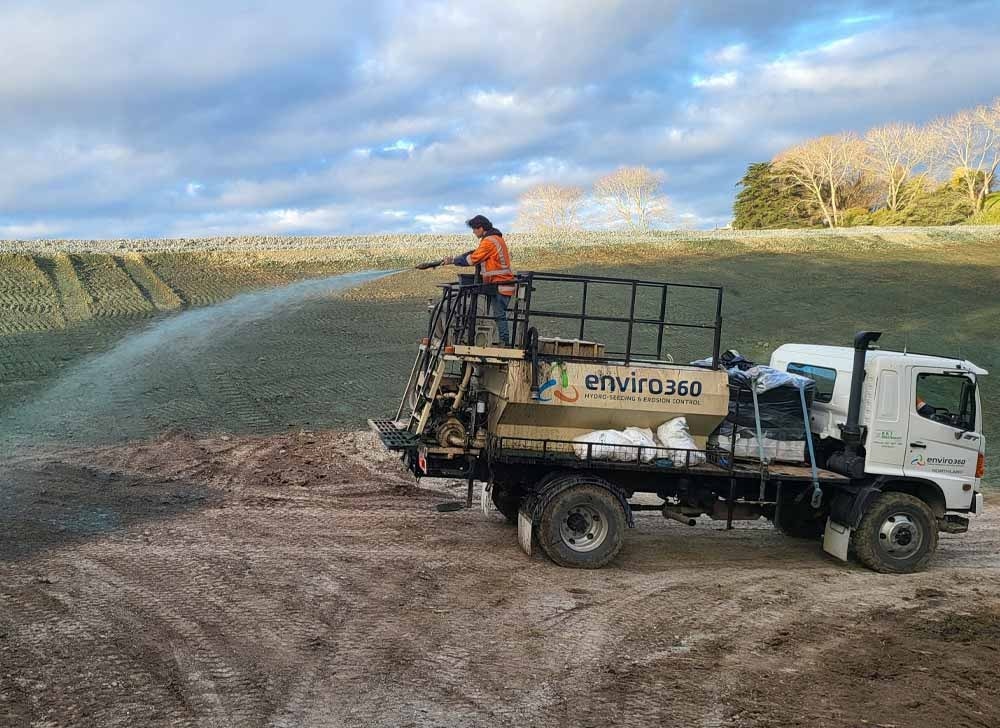Erosion control is essential for protecting our environment and keeping our waterways clean and our soil stable. Erosion is when soil is impacted by wind, water or other activities like construction, causing the soil to shift and potentially harm the environment.
Why Is Erosion Control Important?
You might wonder why erosion control is so important. While erosion is natural over time, it can be greatly accelerated by human activities, potentially hurting the environment.
How does erosion control help Aotearoa?
- Maintaining Soil Quality. Erosion can degrade the quality of topsoil, making it unsuitable for essential activities like agriculture. Topsoil is rich in nutrients that support plant growth, so erosion can make it more difficult for strong, healthy plants to grow.
- Protecting Bodies Of Water. When soil shifts, it can move and fall into waterways like rivers and lakes. This soil can contain contaminants, hurting water quality and harming life in and around the water. Erosion control stops this from happening, protecting aquatic and riparian ecosystems.
- Conserving The Environment. Erosion can disrupt natural habitats, altering the land and making it more challenging for native flora and fauna to thrive. Erosion control promotes biodiversity and environmental sustainability. New Zealand has many unique native species, and it’s vital for us to protect them when carrying out construction, earthmoving, etc.
- Minimising Damage. Not only can erosion damage the environment, but it can also harm roads, buildings and other structures. These damages can be rather expensive to fix and dangerous to deal with. Erosion control stops this damage before it happens, preventing costly repairs and potential accidents.
The Principles Of Erosion Control
There are various kinds of erosion, so you’ll need to pick an erosion control method that suits your situation. Erosion control involves many considerations, including:
- Soil Stabilisation. Soil stabilisation prevents soil from shifting. Methods like hay mulching and hydroseeding help keep soil in place. Water and wind can cause soil to move, so by covering soil with mulch or plants, the soil is protected.
- Water Management. Proper drainage systems and retention ponds reduce runoff and soil loss. These measures help to manage water appropriately, stopping pollutants from entering waterways.
- Vegetation Solutions. Plant roots reinforce soil structure and slow water flow, contributing to soil stability. Hydroseeding with native NZ plants is a fantastic way to prevent soil erosion and add hardy New Zealand plants to the area.
- Landscaping Structures. Innovative landscaping can also prevent soil erosion. Retaining walls, gabions and more can act as physical barriers against erosion. Always keep erosion and drainage in mind when landscaping your property or altering the land through construction, earthworks and more.
With these principles in mind, what kind of erosion control methods should you consider for your project?
- Hydroseeding. Hydroseeding is the process of spraying a seed mix onto the soil to encourage healthy germination and plant growth. The plant roots grow into the soil to stabilise it, and the plants on top of the soil help with drainage management. Plus, hydroseeding is a fast way to introduce new vegetation to your land. Make sure to choose plants that are suitable for your environment. In particular, native plants are a good choice because they’ve evolved to withstand New Zealand’s climate. Plants can also add appeal to your land and support local animals.
- Hay Mulching. Hay mulching involves spraying hay onto bare soil, creating an extra layer of defence. If your soil needs immediate protection and you can’t wait for seeds to grow, then consider hay mulching. The layer of hay slows rainwater and stops the soil from being disturbed by the impact of rain droplets. The hay also protects the underlying soil from animals who may try to eat from it and stops the wind from disturbing the topsoil.
- Landscaping. Creative landscaping can do so much for your property. It can help with erosion control, and it can also add to your property’s visual appeal and encourage proper drainage. Landscape techniques like planting native plants in the right places, incorporating terraces, adding retaining walls and so on can manage water runoff and minimise the impact of rain and wind. Landscaping methods can be as visually appealing as they are practical, so search for a balance between form and function if you want to make the most of your outdoor spaces. Additionally, remember that it’s not enough to landscape your property once, you must also keep up with maintenance to prevent issues down the track. Professional landscape maintenance takes the burden off your shoulders while protecting the environment around you.
Utilising Erosion Control To Protect Your Land
Investing in erosion control measures now can prevent environmental damage and costly repairs down the track. What kind of project are you working on? If you want to protect your soil, we welcome you to reach out to us at Enviro360. We’re passionate about erosion control and supporting our local New Zealand environment.
You can call us on 09 435 0755 or use our website to reach us.
Trust Enviro360 for eco-friendly erosion control services.

